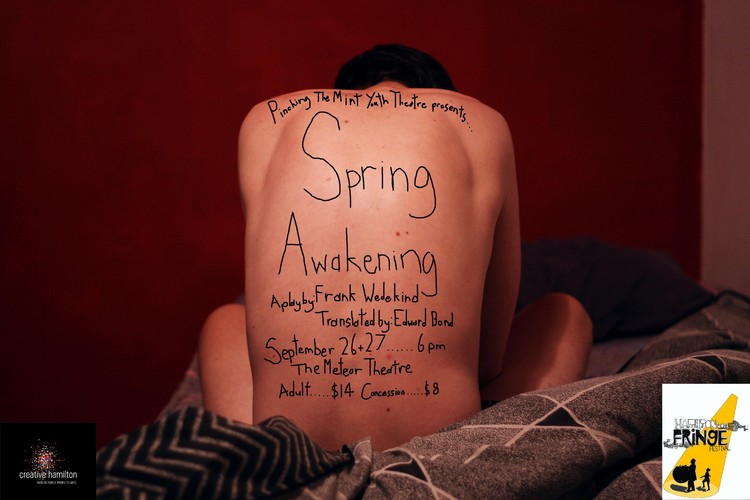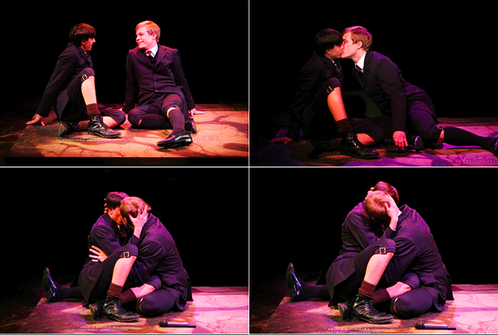I’ve seen a handful of operas before, but “Turandot” has the craziest plot out of all of them. Princess Turnadot is an icily independent person who refuses to marry anyone based on an ancestor’s terrible experience. To completely avoid matrimony, she employs a system where any man could marry her as long they solve three riddles. Simple enough, right? Not so much. The one disclaimer is that if you get any of the three riddles wrong, the princess reserves the right to murder you.
The story focuses on Calàf, a prince who is willing to risk his life (seriously dude?) to obtain the love of Princess Turandot. Despite this seemingly Disney-esque plotline, the story contains much more drama than the stereotype denotes. Calàf becomes the first person to solve all three riddles out of a plethora of men, and Turandot throws a hissy fit; she refuses to have her independence taken away from her. Calàf says he’ll make an exception to his rule: as long as she can guess his name by sunrise, the marriage will be broken off. Oh, and this agreement also states she could totally kill him if she wants to. Turnadot sends out a decree that everyone must find his name, or they’ll all be killed (seriously what does everyone see in this girl?!). They accuse Liù, Calàf’s slave, of knowing his name, and continue to torture her until she says it. Long story short, Liù says that she’s madly in love with Calàf, murders herself, and then Calàf and Turandot end up in love by the end of the opera.
I have a major problem with one aspect of Puccini’s masterpiece; this opera perpetuates the primitive stereotype that one’s looks defines who they are as a person. Boys are literally giving up their precious right to live for a princess whose sociopathic ways frightened me during most of the play; she treats killing people like a completely normal topic. Additionally, Calàf ends up loving Turandot in spite of the fact that she was the driving force behind the death of Liù, the girl who saved his life. Overall, it reflects a society that places a grater emphasis on materialistic and self-absorbed values, while completely ignoring characteristics such as intelligence and loyalty.
I am very excited to see how this work will be brought to life on stage Tuesday.









 Side; penniless people are scattered throughout the concrete jungle. These poverty-stricken citizens are littered on the streets begging for change, digging through garbage cans, and sleeping through harsh weather conditions. What does the half that is better off do? Nothing but pass them by. I myself am guilty of this. While sparing a dollar to every homeless person I see is not possible, I wish that I had more sympathy when I ignored them all those times to avoid being late for class.
Side; penniless people are scattered throughout the concrete jungle. These poverty-stricken citizens are littered on the streets begging for change, digging through garbage cans, and sleeping through harsh weather conditions. What does the half that is better off do? Nothing but pass them by. I myself am guilty of this. While sparing a dollar to every homeless person I see is not possible, I wish that I had more sympathy when I ignored them all those times to avoid being late for class. hours about 100 of his slides. He later titled these lectures “How the Other Half Lives and Dies,” to show just how gruesome this way of life was. But 1890 isn’t so far off from 2015, because poor
hours about 100 of his slides. He later titled these lectures “How the Other Half Lives and Dies,” to show just how gruesome this way of life was. But 1890 isn’t so far off from 2015, because poor So while I sit here typing this blog post on my free computer, to be submitted for a grade at my prestigious university, someone else sleeps on the streets, waiting for enough change to purchase McDonalds’s. Jacob Riis’ photos are truly shocking, but they’re just art to the better half. To the “other half,” these photos are a reality.
So while I sit here typing this blog post on my free computer, to be submitted for a grade at my prestigious university, someone else sleeps on the streets, waiting for enough change to purchase McDonalds’s. Jacob Riis’ photos are truly shocking, but they’re just art to the better half. To the “other half,” these photos are a reality.


 The Abrons Arts Center current artistic director, Jay Wegman, is often described as “outrageous” although his current involvement in suggestive theatrical productions is distinctly polar to his upbringing. Wegman grew up as a churchgoer, and eventually moved to Manhattan to attend seminary. At the Cathedral of St. John the Divine, Wegman was hired as the canon for liturgy and the arts, and it was after he left this position that he started work with Abrons.
The Abrons Arts Center current artistic director, Jay Wegman, is often described as “outrageous” although his current involvement in suggestive theatrical productions is distinctly polar to his upbringing. Wegman grew up as a churchgoer, and eventually moved to Manhattan to attend seminary. At the Cathedral of St. John the Divine, Wegman was hired as the canon for liturgy and the arts, and it was after he left this position that he started work with Abrons. ience an example of performing arts, and claim that as a result they experienced a certain sensation, someone else cannot deny their experience to be genuine, even if the latter lacks evidence to make his or her claim. Art does not pertain to rules, definitions, nor limits.
ience an example of performing arts, and claim that as a result they experienced a certain sensation, someone else cannot deny their experience to be genuine, even if the latter lacks evidence to make his or her claim. Art does not pertain to rules, definitions, nor limits.





Recent Comments